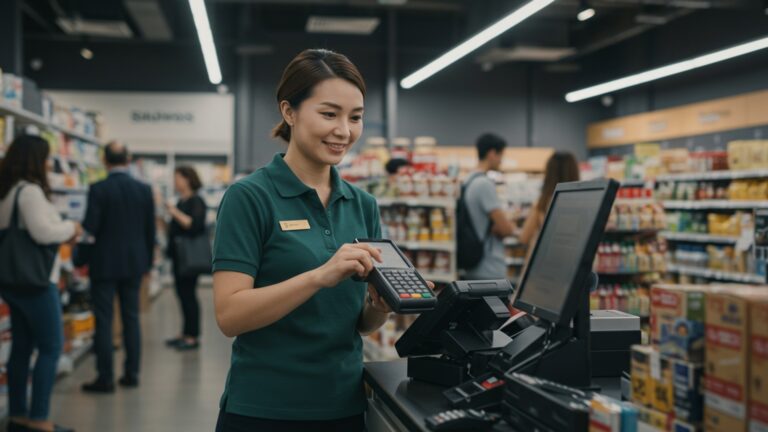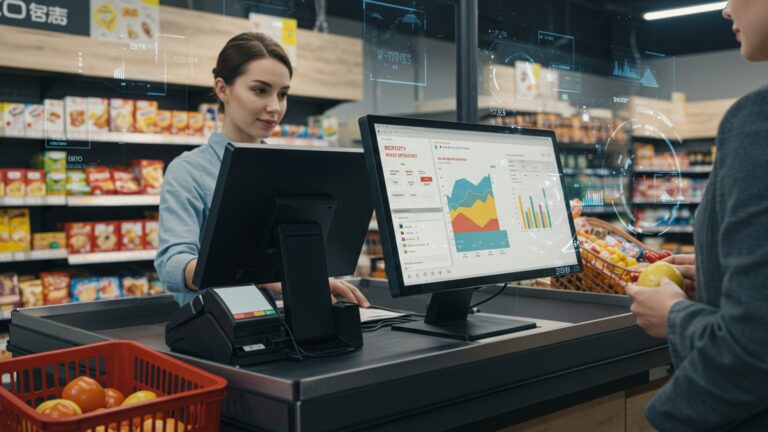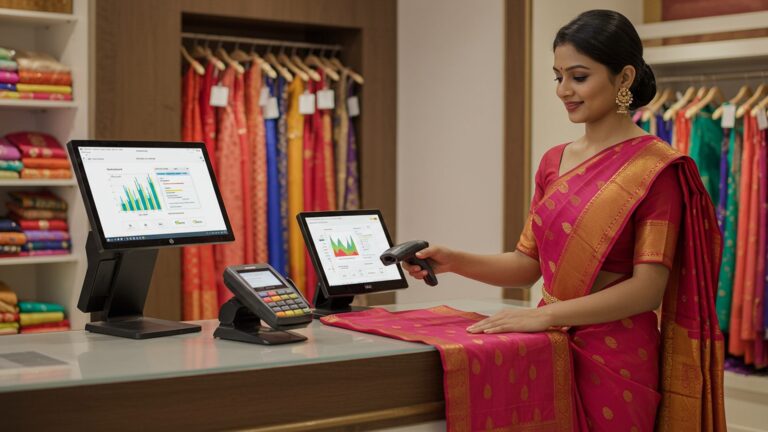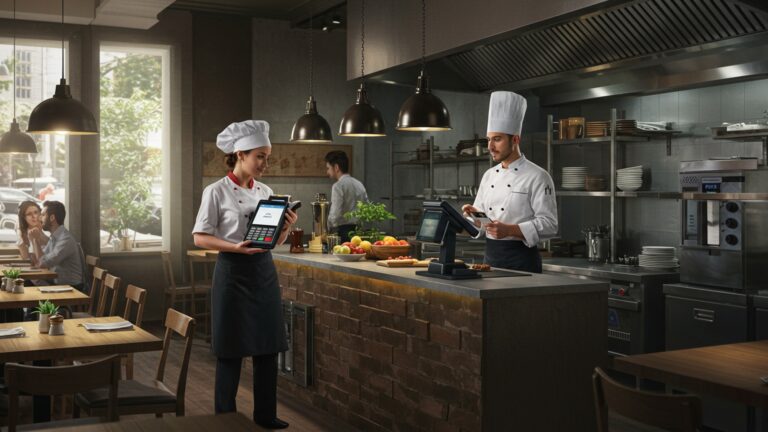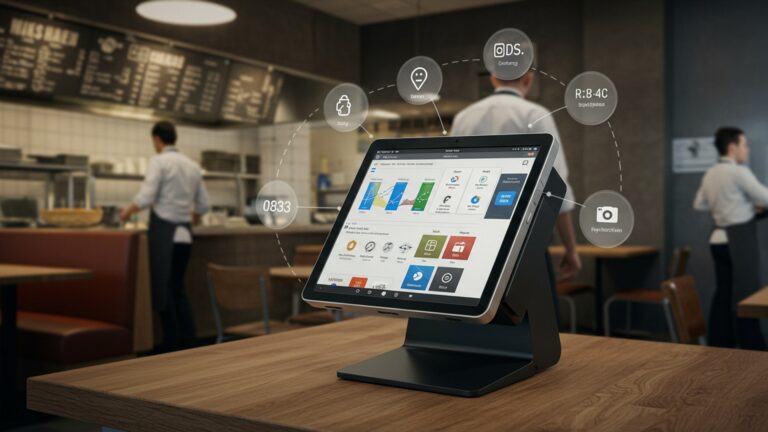Learn How to Choose the Best POS Software for Your Grocery Store
The modern grocery landscape demands more than just basic transaction processing; it requires a strategic backbone that optimizes every operational facet. Choosing the right pos software for grocery store operations is no longer a mere IT decision but a crucial investment shaping profitability and customer loyalty. Today’s advanced systems integrate features like AI-powered inventory management to minimize spoilage of fresh produce, seamless self-checkout options. robust e-commerce connectivity for curbside pickup and delivery services, a critical trend accelerated by recent market shifts. Beyond ringing up sales, a superior POS solution provides real-time data analytics, empowering grocers to personalize promotions, manage fluctuating supply chains. enhance the overall shopping experience, turning operational challenges into competitive advantages.
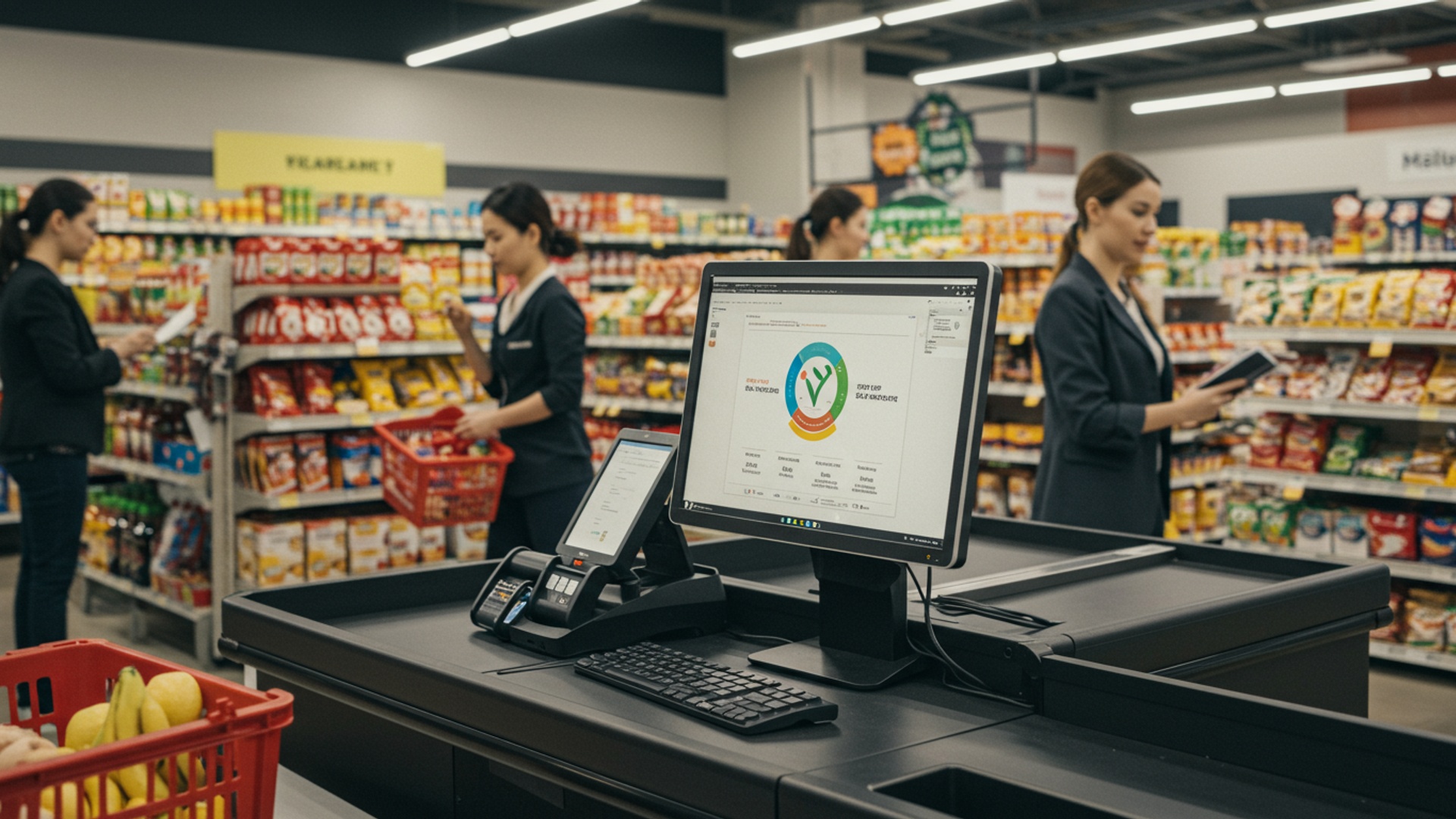
Understanding the Crucial Role of POS Software for Grocery Stores
In today’s fast-paced retail environment, a grocery store is far more than just a place to buy food; it’s a complex operation requiring precision, efficiency. adaptability. At the heart of this operation lies the Point of Sale (POS) system. Fundamentally, POS software is the digital system that processes customer transactions. But, for a grocery store, its capabilities extend far beyond simply ringing up sales. It’s the central nervous system managing inventory, customer data, employee performance. crucial business insights.
For grocery store owners, selecting the right pos software for grocery store is not merely an upgrade but a strategic investment that can significantly impact profitability, customer satisfaction. operational efficiency. Without a robust POS, grocery stores often grapple with issues like inaccurate inventory counts, slow checkout lines, missed sales opportunities. a lack of data to inform business decisions. A modern POS system integrates various functions, streamlining daily operations from the moment a product arrives at the back dock to when it leaves with a customer.
Core Features Essential for Grocery Store POS
When evaluating pos software for grocery store, certain features are non-negotiable. These are the foundational elements that empower a grocery business to run smoothly and efficiently.
- Inventory Management
- Perishable Goods Tracking
- Batch Tracking
- Multi-Location Inventory
- Automated Reordering
- Barcode Scanning & Label Printing
- Customer Management & Loyalty Programs
- Reporting & Analytics
- Diverse Payment Processing
- Employee Management
- Scalability & Multi-Store Support
- Offline Mode Capability
This is arguably the most critical feature for a grocery store. It goes beyond simple stock counts, requiring capabilities for:
Managing expiry dates, ‘first-in, first-out’ (FIFO) or ‘first-expire, first-out’ (FEFO) strategies. waste reduction.
Essential for produce, meat. dairy, allowing for recalls or quality control.
If you have multiple aisles or storage areas, tracking where items are located.
Setting reorder points to prevent stockouts of popular items and overstocking of slow movers.
Speed and accuracy at checkout are paramount. The POS should seamlessly integrate with barcode scanners (both 1D and 2D) and allow for on-demand label printing for items without barcodes or for special promotions.
Grocery stores thrive on repeat business. A robust POS tracks customer purchase history, enables loyalty programs (points, discounts, exclusive offers). can even personalize marketing efforts. This data allows you to interpret your customers’ preferences and tailor your offerings.
Data is gold. The pos software for grocery store should provide comprehensive reports on sales trends (by item, category, time of day), inventory performance, employee productivity. profit margins. These insights are vital for making informed decisions about pricing, promotions. staffing.
Customers expect flexibility. Your POS must support various payment methods, including credit/debit cards (EMV chip cards), contactless payments (NFC like Apple Pay, Google Pay), gift cards. even SNAP/EBT where applicable. Secure, fast processing is key.
Track employee hours, manage shifts, assign specific roles and permissions. monitor individual sales performance directly through the POS. This simplifies payroll and ensures accountability.
Even if you start with one location, consider future growth. A scalable POS system can easily add new registers, users. even integrate multiple store locations under a single management dashboard.
Internet outages can happen. A good pos software for grocery store should function offline, allowing transactions to continue and syncing data once connectivity is restored, preventing disruptions and lost sales.
Advanced Features That Drive Growth
Beyond the essentials, certain advanced features can significantly enhance a grocery store’s competitiveness and open new revenue streams.
- E-commerce Integration
- Self-Checkout Options
- Supplier Management & Purchase Order Automation
- Loss Prevention Tools
- Hardware Compatibility
- Integration with Accounting Software
The rise of online grocery shopping is undeniable. Seamless integration between your in-store POS and an e-commerce platform allows for online ordering, curbside pickup. home delivery, leveraging your existing inventory.
To reduce labor costs and speed up checkout lines, especially during peak hours, self-checkout kiosks are becoming increasingly popular. Your POS should support this integration.
Streamline your procurement process by generating purchase orders directly from your POS based on inventory levels and sales data. Manage supplier relationships and track order statuses efficiently.
Features like void tracking, return management, cashier performance monitoring. detailed transaction logs help identify and prevent shrinkage due to error or theft.
Your pos software for grocery store needs to work with specialized grocery hardware, including integrated scales (for produce, deli items), high-speed barcode scanners, receipt printers, customer displays. cash drawers.
Seamless data flow between your POS and accounting software (e. g. , QuickBooks, Xero) eliminates manual data entry, reduces errors. simplifies financial reporting and tax preparation.
Cloud-Based vs. On-Premise POS: A Comparison
When choosing pos software for grocery store, one of the primary decisions is between a cloud-based (SaaS) and an on-premise (local server) system. Each has distinct advantages and disadvantages.
| Feature | Cloud-Based POS (SaaS) | On-Premise POS |
|---|---|---|
| Definition | Software hosted on remote servers, accessed via the internet. Subscription-based. | Software installed directly on your local servers/computers. One-time purchase (often). |
| Cost Structure | Typically monthly/annual subscription fees. Lower upfront cost. | Higher upfront cost for software license and hardware. Lower recurring fees (maintenance may apply). |
| Accessibility | Access data and manage operations from anywhere with an internet connection (e. g. , home, multiple stores). | Primarily accessible only on-site where the server is located. Remote access may require complex VPN setup. |
| Maintenance & Updates | Vendor handles all software updates, security patches. server maintenance. Automatic. | Your responsibility to manage updates, backups. IT maintenance. Requires in-house IT expertise or external support. |
| Data Security | Data stored in secure, professional data centers with robust backup and disaster recovery protocols. | Security depends entirely on your local IT infrastructure. Vulnerable to local hardware failure or physical theft. |
| Scalability | Easily scale up or down by adjusting your subscription plan. Add new registers/users quickly. | Scaling may require significant hardware upgrades and IT reconfiguration. |
| Offline Capability | Many modern cloud systems offer an offline mode that syncs data once online. | Typically designed for continuous local operation. can be vulnerable if the local server fails. |
For most modern grocery stores, especially those looking for flexibility, lower upfront costs, remote accessibility. reduced IT burden, a cloud-based pos software for grocery store is often the preferred choice. It allows owners to focus on their business rather than managing complex IT infrastructure.
Key Considerations Before Making a Decision
Beyond features, several practical factors should guide your selection process for the best pos software for grocery store.
- Budget
- Ease of Use & Training
- Customer Support & Vendor Reputation
- Security
- Customization & Flexibility
- Trial Periods & Demos
comprehend both the upfront costs (hardware, setup, initial licensing) and ongoing expenses (monthly subscriptions, transaction fees, support plans). Get clear quotes and compare total cost of ownership over 3-5 years. Remember that a cheaper solution upfront might have hidden costs or lack critical features.
Your staff will be using this system every day. Opt for intuitive software with a user-friendly interface that minimizes training time and reduces errors. Request a demo and let some of your cashiers try it out.
This is critical. What kind of support does the vendor offer (24/7, phone, email, chat)? Read reviews and case studies. A reliable vendor provides excellent support, especially during critical times like system setup or unexpected issues during peak hours. Ask about their uptime guarantees and response times.
Ensure the POS system is PCI compliant for secure payment processing. Look for features like end-to-end encryption for sensitive data, user permissions. robust backup solutions to protect your business and customer insights.
Can the software be tailored to your specific grocery store needs? Do you need custom reports, specific loyalty program tiers, or unique product categories? A flexible system can adapt as your business evolves.
Always request a demo and, if possible, a free trial. This hands-on experience is invaluable for assessing whether the software truly meets your operational requirements before committing financially.
Implementation and Training: Making the Transition Smooth
Once you’ve chosen your pos software for grocery store, successful implementation is key to maximizing its benefits and minimizing disruption.
- Data Migration Strategy
- Staff Training Best Practices
- Testing the System
Plan how you will transfer existing product data (SKUs, pricing, inventory levels), customer data. vendor details into the new system. Most vendors offer tools or services for this. it requires careful planning and validation to ensure accuracy.
Allocate ample time for comprehensive staff training. Conduct sessions for different roles (cashiers, managers, inventory staff). Provide clear, step-by-step guides and allow for hands-on practice. Emphasize the benefits of the new system to foster adoption. Consider a phased rollout if your store is large.
Before going live, thoroughly test every function: processing sales, returns, gift cards, loyalty points, inventory adjustments. report generation. Run mock transactions and ensure all hardware (scanners, scales, printers) is working correctly with the software.
Real-World Application: “The Fresh Basket” Grocery’s Transformation
Consider “The Fresh Basket,” a mid-sized independent grocery store facing common challenges: manual inventory counts leading to frequent stockouts of popular items and overstocking of perishables, long checkout lines during peak hours. no way to track loyal customers. Their old, clunky cash register system offered zero insights.
After careful evaluation, the owner, Maria, chose a cloud-based pos software for grocery store that offered robust inventory management, integrated loyalty programs. advanced reporting. Here’s how it transformed her business:
- Inventory Accuracy
- Faster Checkouts
- Customer Loyalty
- Actionable Insights
The new POS automatically updated inventory with every sale and incoming delivery. Maria set reorder points for high-demand produce and dairy. A feature allowing her staff to scan and log spoiled items helped reduce waste by 15% in the first three months. She could also easily track batch numbers for specific organic produce, ensuring quick action if a recall became necessary.
High-speed barcode scanners integrated with the POS, combined with support for contactless payments, cut average transaction times by 20 seconds. This might seem small. it significantly reduced queue lengths during busy evenings, enhancing customer satisfaction.
The integrated loyalty program allowed customers to earn points on every purchase, redeemable for discounts. Maria could see top-spending customers and their favorite products, enabling her to send targeted promotions (e. g. , a discount on organic produce to her frequent organic shoppers), boosting repeat visits by 10%.
Maria used the daily sales reports to identify her best-selling items, comprehend peak shopping hours. optimize staff scheduling. Weekly inventory reports helped her negotiate better deals with suppliers by demonstrating consistent purchase volumes for specific products.
The transition required dedicated training for her staff. the initial investment in time and resources quickly paid off, transforming “The Fresh Basket” into a more efficient, data-driven. customer-focused grocery store.
Conclusion
Choosing the right POS software for your grocery store is less about finding the most feature-rich system and more about discovering the perfect fit that aligns with your unique operational rhythm. Think of it as your store’s central nervous system, orchestrating everything from real-time inventory of perishable goods to seamless customer checkouts and even integrated online order fulfillment for curbside pickup. My personal tip: always prioritize a hands-on demo with your top contenders. It’s invaluable to see how the system handles a complex transaction, manages supplier orders, or updates loyalty points in real-time, especially with today’s focus on efficient stock rotation and customer retention. The current trend leans heavily towards systems that offer robust analytics, allowing you to quickly identify fast-moving items or reduce waste, which is crucial for profitability. Don’t settle for generic; demand a solution that truly understands the nuances of grocery retail, empowering you to optimize every aspect of your business. Your informed decision today will pave the way for a more streamlined, profitable. customer-friendly store tomorrow.
More Articles
The Ultimate Guide to Understanding Essential POS Software Features
Learn How Smart POS Billing Software Boosts Business Efficiency
Your Complete Guide to Integrated Billing and POS Software
Uncover the Best POS Software in India for Small Businesses
Learn How Mobile POS Software Boosts Sales and Customer Experience
FAQs
What exactly is a POS system for my grocery store?
A Point of Sale (POS) system for a grocery store is the central hub for all your transactions and operations. It’s not just a fancy cash register; it handles sales, tracks inventory, manages customer data. can even help with employee scheduling, all from one integrated platform.
Why do I even need a special POS system for my grocery store, can’t I just use a regular one?
Grocery stores have unique needs that standard POS systems might miss. You’re dealing with things like weighted items, fresh produce, perishable goods, rapid inventory turnover. often a large number of SKUs. A specialized grocery POS is designed to handle these complexities efficiently, from scale integration to batch tracking for expiry dates.
Okay, so what are the absolute must-have features I should look for in a grocery POS software?
Look for robust inventory management (especially for perishables), integration with scales, quick checkout processing, customer loyalty programs, vendor management, reporting tools. the ability to handle various payment types including EBT. Self-checkout options can also be a big plus.
Roughly, how much does a good POS system for a grocery store usually cost?
The cost can vary quite a bit depending on the features, number of terminals. whether it’s cloud-based or on-premise. You might pay a monthly subscription fee per terminal for cloud solutions (anywhere from $50-$200+), plus initial hardware costs. On-premise systems often have a higher upfront cost but lower ongoing fees. Always factor in training and support costs too.
I’m worried about the setup and getting my staff trained. Is it a huge hassle?
It doesn’t have to be! Many modern POS systems are designed with user-friendliness in mind. While there’s always a learning curve with new technology, good software providers offer training resources, tutorials. customer support to help you and your team get up to speed quickly. Look for systems with intuitive interfaces.
Can a good POS really help me manage my inventory better, particularly for fresh produce and other perishable items?
Absolutely! A specialized grocery POS is excellent for inventory. It can track stock levels in real-time, alert you when items are running low, manage expiry dates. even help with ordering. For fresh produce, features like waste tracking and detailed sales analytics can significantly reduce spoilage and optimize your purchasing.
How can a POS system help me keep my customers coming back?
Many grocery POS systems include integrated customer relationship management (CRM) features. This means you can easily set up loyalty programs, track customer purchase history, offer targeted discounts. even manage gift cards. Knowing your customers’ buying habits helps you personalize their experience and build stronger relationships, encouraging repeat business.

